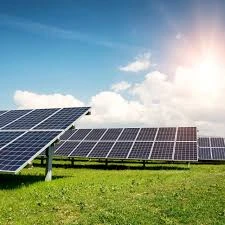grid tie inverter with limiter
Understanding Grid-Tie Inverters with Limiters
In the evolving landscape of renewable energy, the integration of solar power systems into the existing electrical grid is becoming increasingly important. One of the key components facilitating this integration is the grid-tie inverter. Among the various types of grid-tie inverters, those equipped with limiters are gaining attention for their ability to manage power flow effectively.
A grid-tie inverter serves the critical function of converting the direct current (DC) produced by solar panels into alternating current (AC), which can be used by household appliances or fed back into the grid. By connecting a solar power system to the grid, homeowners can not only utilize renewable energy for their consumption but also benefit from net metering, where excess power produced can be sold back to the utility, earning credits on electricity bills.
However, the increase in distributed energy resources (DERs) like solar panels poses challenges for grid stability and management. In particular, situations may arise where the generated power exceeds local consumption or the grid’s capacity to absorb it. This is where inverters with limiters come into play.
grid tie inverter with limiter

Limiters are innovative features designed to prevent the inverter from injecting excessive energy into the grid. By monitoring the load and the grid's condition, the limiter ensures that the power output remains within acceptable parameters. This not only protects the grid infrastructure but also safeguards the inverter from damage caused by operating beyond its limits.
Moreover, limiters enhance grid reliability. In times of peak generation, such as during sunny afternoons, they allow for the smooth operation of the solar system without causing voltage excursions or frequency imbalances. This is increasingly vital as more renewable energy sources are added to the grid, potentially leading to operational concerns such as congestion and voltage regulation issues.
The implementation of grid-tie inverters with limiters also promotes the stability of the energy market. By regulating power output, these systems can contribute to maintaining the balance between supply and demand on the grid, which is essential for preventing blackouts and ensuring a reliable energy supply.
In conclusion, grid-tie inverters with limiters are a crucial advancement in the field of energy management. They ensure that solar power systems can efficiently and safely interact with the grid, creating a win-win scenario for energy producers and utilities alike. As the world moves towards greater reliance on renewable energy, the role of these innovative inverters will only become more significant.
-
Unlocking Energy Freedom with the Off Grid Solar InverterNewsJun.06,2025
-
Unlock More Solar Power with a High-Efficiency Bifacial Solar PanelNewsJun.06,2025
-
Power Your Future with High-Efficiency Monocrystalline Solar PanelsNewsJun.06,2025
-
Next-Gen Solar Power Starts with Micro Solar InvertersNewsJun.06,2025
-
Harnessing Peak Efficiency with the On Grid Solar InverterNewsJun.06,2025
-
Discover Unmatched Efficiency with the Latest String Solar InverterNewsJun.06,2025







